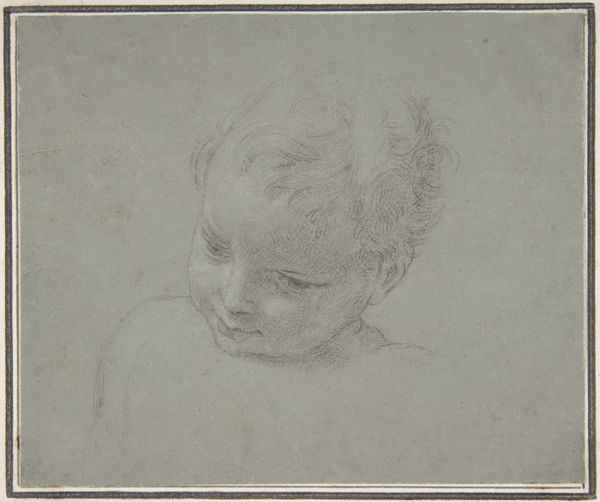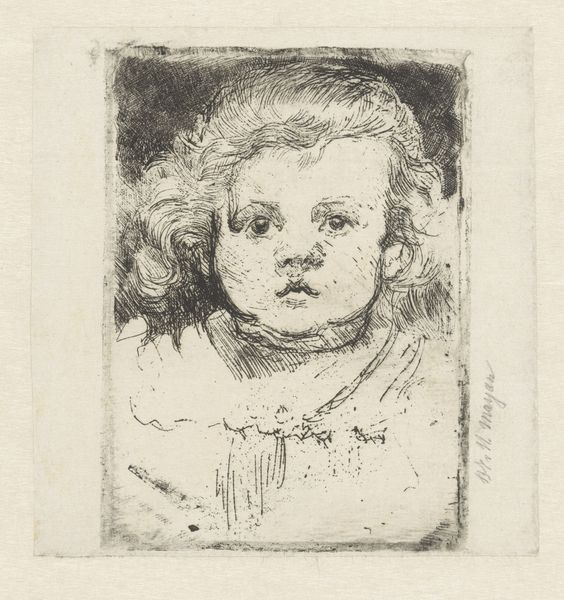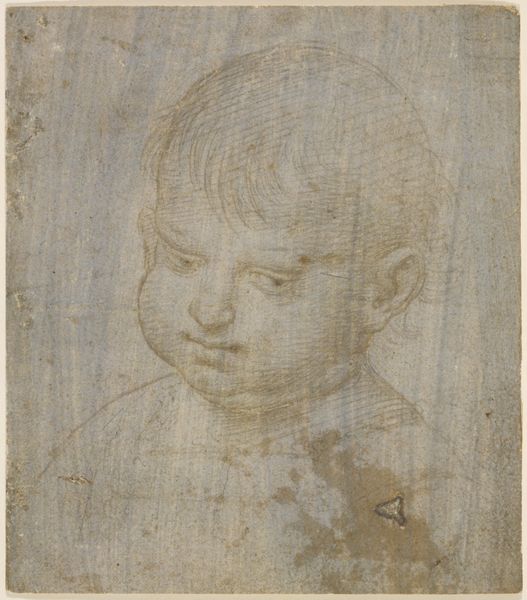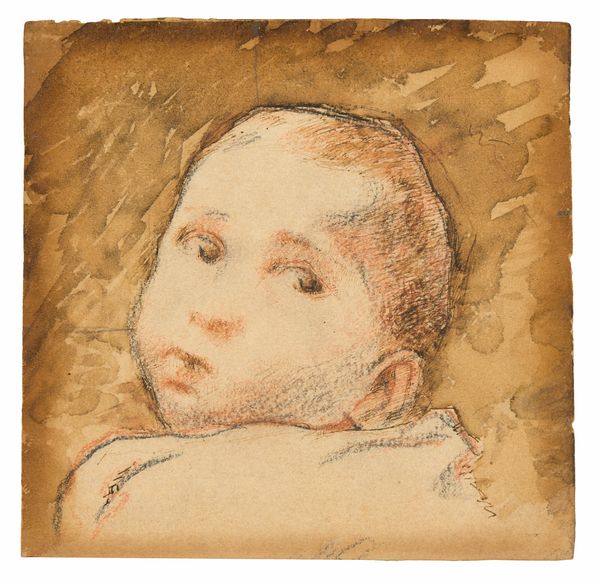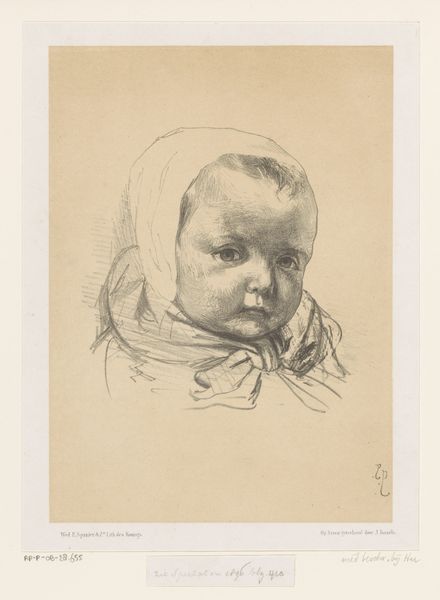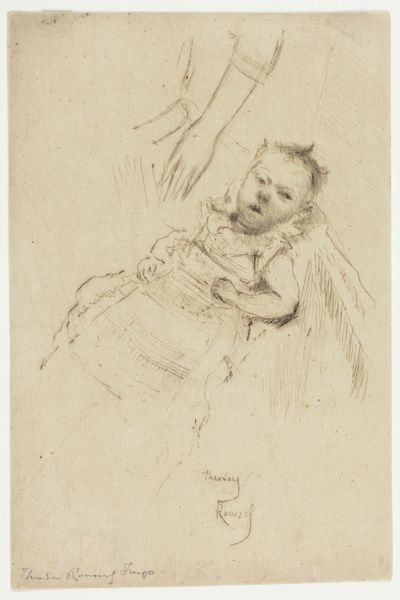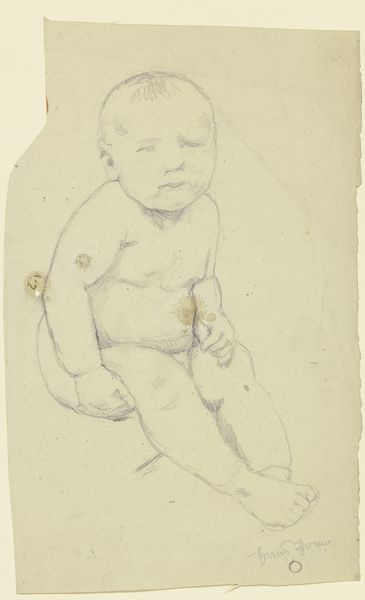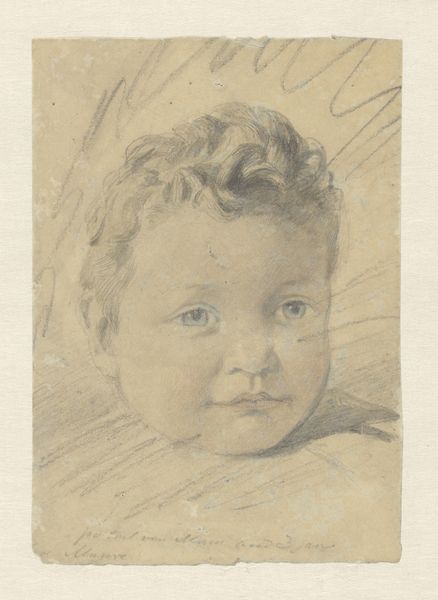
Portræt af kunstnerens søn Clovis, født den 10.maj 1879 1879 - 1880
0:00
0:00
Dimensions: 209 mm (height) x 266 mm (width) (bladmaal)
Curator: A quiet intensity is conveyed in this delicate portrait. Editor: I'd agree, and I think the bare quality of the line work definitely adds to that stillness. This is Paul Gauguin’s pencil drawing, “Portrait of the Artist's Son Clovis, Born May 10, 1879,” likely executed between 1879 and 1880. Curator: Given it’s just pencil on paper, the application of light and shadow feels quite masterful. There's a real intimacy in the textures he coaxes out of such simple materials. One can almost imagine Gauguin, carefully observing his son’s features in natural light, maybe by a window. Editor: The intimacy you mention speaks to a very gendered aspect of art production too, doesn’t it? Here we have Gauguin, a father depicting his child in a manner that contrasts quite noticeably to dominant representations of childhood that often verge into idealization or the decorative. It subtly challenges the established patriarchy through a tender engagement with his domestic life. Curator: Precisely, we might also see it as him using his available resources—simple materials he might have had readily to hand—while experimenting formally. Look at how the unworked areas contribute just as much as the pencil strokes to give us the overall shape. He's thinking through the forms themselves as a visual problem. Editor: I find that intriguing because if we look closely, particularly in how he hasn’t labored too heavily over defining clear boundaries or sharp outlines, especially in his clothing and hair, then this potentially communicates something more radical about how even within familial spaces, individual identity is something permeable. A fixed idea about masculinity in relation to domestic space is certainly interrogated here. Curator: You highlight an important consideration: his place in the domestic sphere in contrast with a desire for artistic freedom, right? Gauguin eventually prioritized his art and distanced himself from family life, and one must consider how this might play into readings of later, more contentious subject matter concerning questions of colonialism and depictions of Tahitian sitters, for example. Editor: Indeed. Gauguin's biography definitely complicates and enriches any discussion about his artistic practice, because there’s a constant tension between the personal and political which informs it. The intimacy and subtle activism within this familial artwork, when contrasted with colonial power dynamics represented elsewhere, highlight these ethical quandaries. Curator: It's remarkable how much emerges from a piece with such limited materials, though, prompting consideration of those broader social implications. Editor: Absolutely, it's a reminder that even the quietest of images can resonate with deeper meanings and invite larger socio-historical debates.
Comments
No comments
Be the first to comment and join the conversation on the ultimate creative platform.



